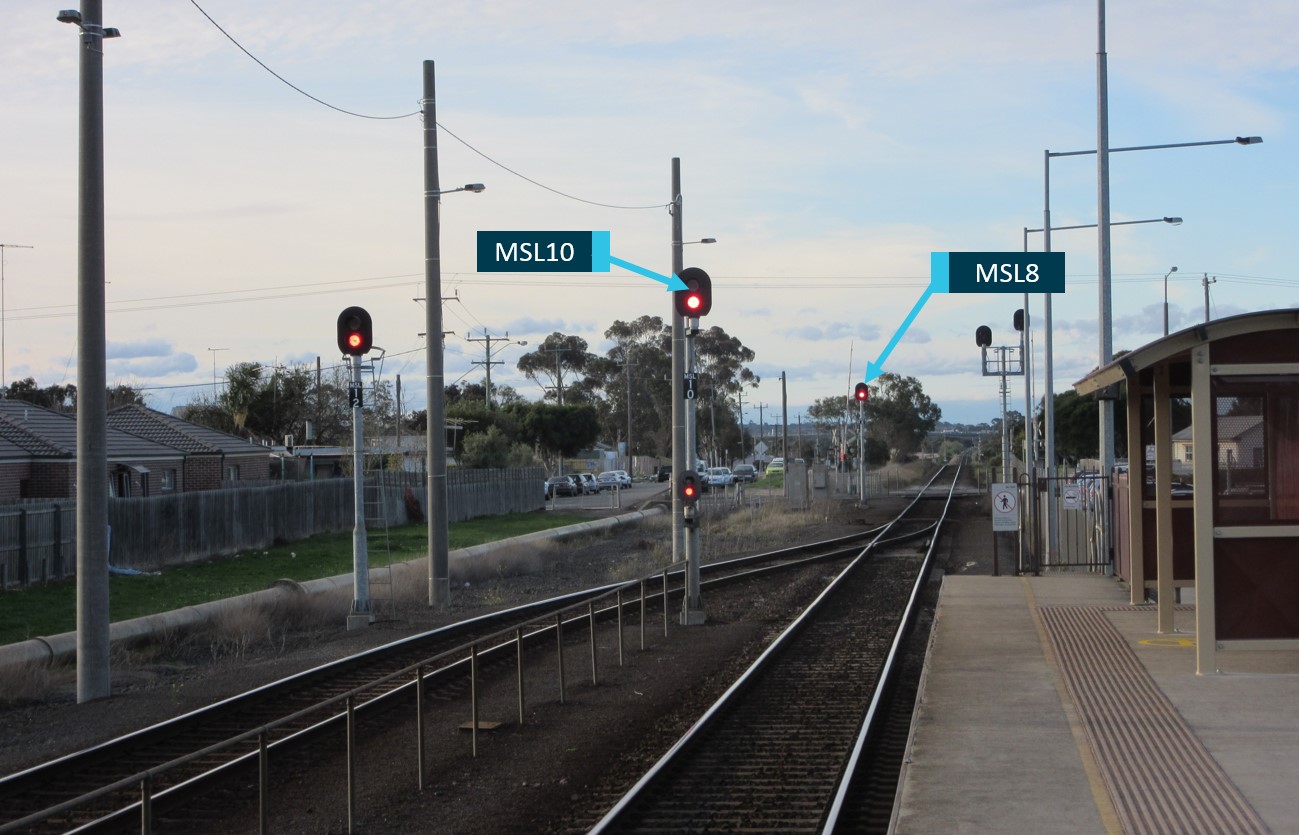
The driver of an empty passenger train that passed two signals at ‘Danger’ and entered a level crossing before the crossing booms had lowered was probably influenced by nicotine withdrawal symptoms, an ATSB investigation has found.
The 2 January 2018 incident occurred when a V/Line three-car VLocity train (number 7750) was repositioning on a non-passenger-carrying service from the outer Geelong, Victoria suburb of Waurn Ponds to Geelong Station, from where it was due to operate a passenger service to Melbourne’s Southern Cross Station. Shortly after passing Marshall Station, the train passed two signals at Danger (MSL10 and MSL8), entered the single line section between Marshall and South Geelong, and then entered the Marshalltown Road level crossing before the crossing booms had lowered.
At about the same time a V/Line Melbourne to Warrnambool service, with two crew and 166 passengers on-board, had departed Geelong and was heading towards Marshall on the same single line section. The trains were scheduled to cross using the loop track at Marshall. When the train controller in Melbourne became aware that train 7750 was passing signals at Danger, the controller initiated an emergency radio fleet call instructing both trains to stop. When stopped, the distance between the trains was about 940 metres.
The subsequent investigation into the occurrence, conducted on behalf of the Australian Transport Safety Bureau (ATSB) by the Victorian Government Office of the Chief Investigator, Transport Safety, determined that the driver’s performance was probably influenced by symptoms associated with nicotine withdrawal, having not applied a nicotine patch on that day.
Attempts by safety-critical workers to stop smoking should be managed under medical supervision.
The investigation report notes that nicotine withdrawal symptoms typically become apparent within a few hours of last nicotine exposure, and that task-related effects can include difficulty concentrating, memory impairment and attention difficulties. These and other symptoms of nicotine withdrawal probably had an adverse effect on the performance of the driver.
Further, the driver of train 7750 also tested positive for an inactive metabolite of cannabis, with levels suggesting use within the previous seven days. However, it could not be determined whether cannabis use had affected the driver’s performance at the time of this incident.
“Nicotine withdrawal can affect a driver’s performance. To minimise adverse impacts, attempts by safety-critical workers to stop smoking should be managed under medical supervision,” said Chris McKeown, Chief Investigator, Transport Safety.
The report also notes that at the time of the incident, signalling at Marshall did not include any additional enforcement controls to protect against a train exceeding its authority.
Subsequent to the incident, V/Line installed a train protection system at Marshall to stop a train that has passed a signal at Danger. The system also has several over-speed sensors to prevent a train entering the Marshalltown Road level crossing when unprotected.
As part of other infrastructure projects, V/Line also continues with planning for the provision of three-position signalling for this section of track.
“This investigation highlights that rail operators should consider fitting authority-overrun intervention at locations, such as at Marshall, that present a heightened risk due to rail operations on a single, bidirectional track,” Mr McKeown said.
Read the report: Signals passed at danger by train 7750, at Marshall, Victoria, on 2 January 2018


